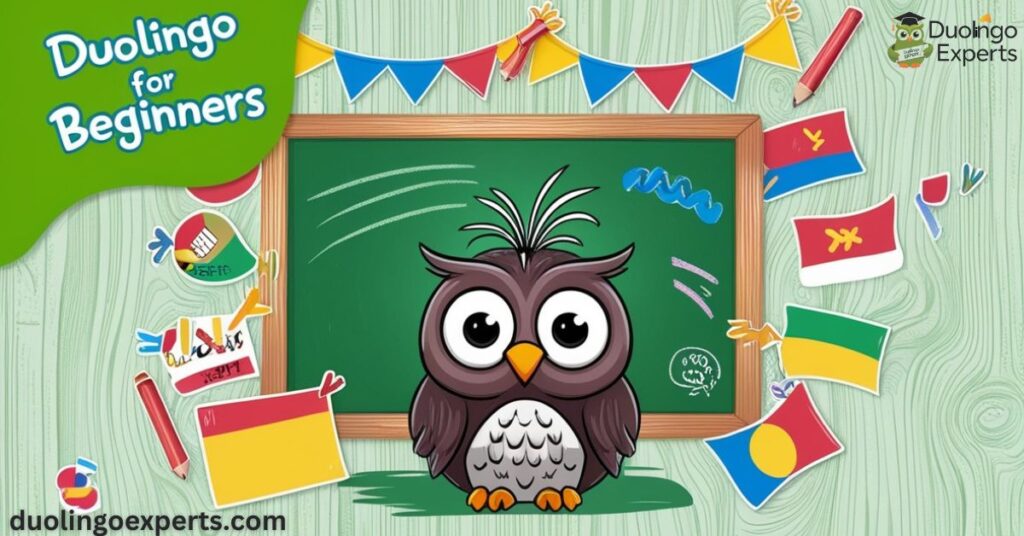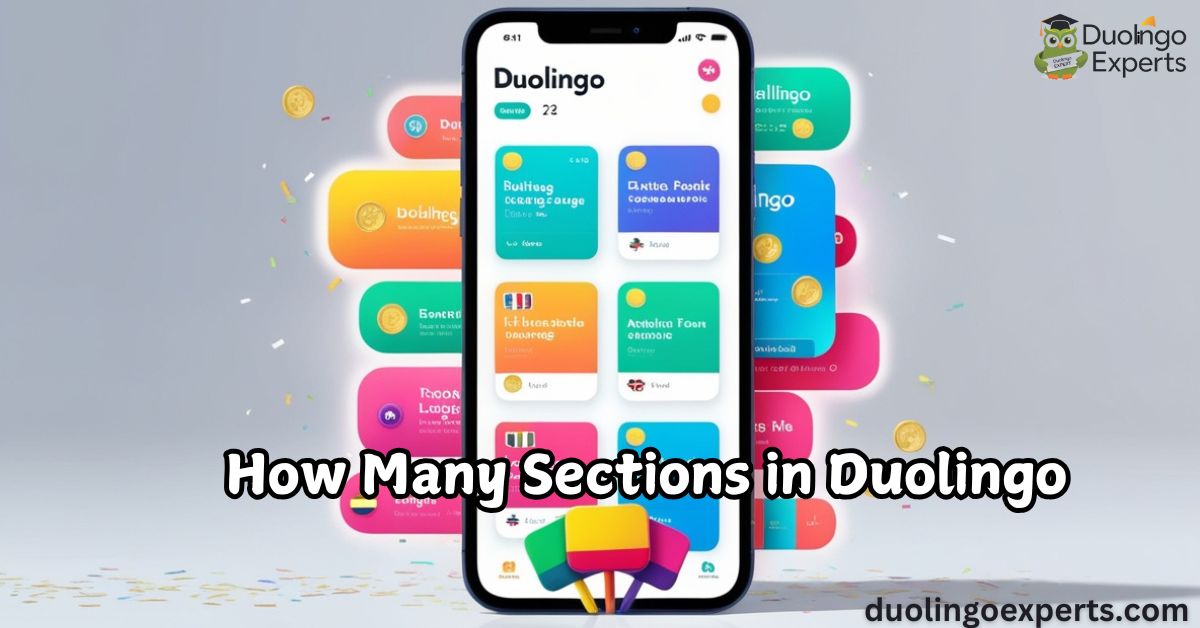Duolingo has revolutionized language learning with its engaging, accessible, and gamified approach. But as you progress through the platform, you may notice something important: Duolingo’s courses are organized into sections, and these sections form the building blocks of your language learning experience.
In this guide, we’ll dive deep into the Duolingo course structure, explore how many sections are in Duolingo, and uncover how each section helps you master a language—from beginner to advanced.
Whether you’re just getting started or have already completed a few lessons, understanding how Duolingo organizes its material can help you approach your learning more strategically and efficiently. Let’s break down everything you need to know about Duolingo sections, the learning path, and how to maximize your language skills improvement with this platform.
Understanding Duolingo’s Course Structure
Duolingo Sections: The Building Blocks of Learning
At its core, Duolingo uses sections (sometimes called “skills” or “units”) to break down each language course into manageable chunks. These sections are structured in a way that introduces key language skills in a logical order. The primary objective of this section-based learning is to keep the learner motivated while progressively challenging them. Each section focuses on different language skills, such as:
- Vocabulary: Common words and phrases necessary for basic communication.
- Grammar: Sentence structures, verb conjugations, and other grammar rules.
- Pronunciation: Ensuring that learners can speak and understand the language as they progress.
- Writing and Reading: Exercises that help solidify language comprehension and correct sentence formation.
The beauty of Duolingo’s course structure is that it provides a clear visual representation of your learning journey. As you complete lessons, you unlock new sections that get progressively more difficult, providing a natural flow from beginner topics to advanced concepts.
How Duolingo Sections Fit Into the Learning Path
Every Duolingo course follows a learning path—a sequence of lessons that guide you from simple vocabulary to more advanced language skills. Think of this as your personalized journey through the language. The platform uses a variety of lesson types to cover the major components of language learning, such as:
- Listening comprehension: Understanding spoken language through different exercises.
- Speaking practice: Encouraging learners to repeat and correctly pronounce words and phrases.
- Grammar drills: Reinforcing essential grammar rules and sentence structures.
- Translation exercises: Testing your ability to translate sentences from your native language into the target language and vice versa.
The structure is designed to keep you on track, using gamified elements like XP points, streaks, and progress bars to mark milestones. As you complete each section, you unlock harder lessons, making the language more natural to learn.
This learning path helps build language skills improvement in a holistic way, ensuring that you not only learn words but also understand how to use them in different contexts.
How Many Sections Are in Duolingo?
The General Structure of Duolingo Courses
The exact number of sections varies from language to language. Some languages have fewer sections because they are more straightforward, while others have more sections due to the complexity of the language. For example, a language with a simple grammatical structure and fewer tenses, such as Spanish, will generally have fewer sections compared to a language with a more complex structure, such as Russian.
However, a general rule of thumb is that Duolingo language courses typically contain between 10 and 20 sections depending on the language. Each section covers a specific aspect of language learning, such as verb tenses, sentence construction, or pronunciation.
Let’s break down how many sections you’ll find in some of the most popular Duolingo courses:
| Language | Number of Sections |
|---|---|
| Spanish | 10-15 sections |
| French | 10-12 sections |
| German | 12-14 sections |
| Italian | 10-12 sections |
| Russian | 15-18 sections |
| Chinese | 15-20 sections |
| Japanese | 12-15 sections |
| Portuguese | 10-13 sections |
| Korean | 13-15 sections |
| Finnish | 15-20 sections |
Language Complexity: How It Affects the Number of Sections
As you can see, languages with more complex grammar structures or completely different writing systems tend to have more sections. Chinese, for instance, requires several sections dedicated to learning characters, tones, and sentence structure, all of which are critical for understanding the language. On the other hand, languages like Spanish or French, which are closely related to English, are somewhat easier to learn and thus require fewer sections.
In addition, some languages require more cultural context and context-specific vocabulary, which necessitates additional sections. For example, Russian and Chinese include extra sections that help learners understand the unique aspects of the language, including idiomatic expressions and cultural nuances. These extra sections ensure that you can not only read and speak the language but also apply it in real-world situations.
Duolingo Section Breakdown by Popular Language

Spanish Course Sections
Spanish, being one of the most widely spoken languages in the world, has a section count of approximately 10 to 15 sections. The course begins with basic vocabulary, such as greetings and common phrases, and then builds up to more advanced grammar concepts, such as verb conjugations and sentence structure. The sections within the Spanish course often include:
- Basic vocabulary: Names of objects, food, numbers, etc.
- Common verb tenses: Present tense, past tense, future tense, etc.
- Gendered nouns: Understanding the differences between masculine and feminine nouns.
- Pronunciation exercises: Specific attention to the rolled “r” and pronunciation of vowels.
By the time you finish the course, you should have the foundation to hold basic conversations, recognize important grammatical rules, and understand Spanish culture through the lens of language.
French Course Sections
The French course is another very popular Duolingo offering. It consists of around 10-12 sections. Since French and English share a lot of vocabulary, this course is relatively accessible to English speakers. Some of the sections in French include:
- Pronunciation drills: French has several nasal vowels and soft consonants, which are practiced at the beginning.
- Grammar exercises: Learn about verbs like être (to be), avoir (to have), and conjugation in both present and past tenses.
- Vocabulary: Expand your understanding of family-related terms, travel-related words, and expressions for daily use.
One of the best features of Duolingo’s French course is the inclusion of cultural knowledge in the lessons, helping you understand when and how to use formal or informal speech.
German Course Sections
German grammar is more complex than French or Spanish, which results in a higher number of sections. The German course on Duolingo consists of 12-14 sections, and it covers:
- Cases (nominative, accusative, etc.): German uses cases to show the function of nouns in sentences.
- Verb conjugations: Focus on both regular and irregular verbs, particularly in the present and past tenses.
- Sentence structure: German has a unique sentence structure, especially with verbs placed at the end of certain sentences.
- Listening and speaking drills: Essential for mastering the pronunciation of German’s distinct sounds.
Since German is often considered a more challenging language for English speakers, Duolingo places more emphasis on grammar and structure, ensuring learners have the tools they need to succeed.
Duolingo for Beginners: How to Progress Through Sections

Duolingo Tips for Beginners
For those new to Duolingo, getting started with the right approach is crucial. It’s easy to get lost in the sea of lessons and sections, but Duolingo tips can help you make the most of your learning experience:
- Start slow and steady: Don’t rush through the sections. The goal is to understand the material before moving on to the next.
- Set daily goals: Establish a daily learning goal and stick to it. Duolingo’s daily practice goals are an excellent way to stay motivated.
- Use the review feature: Duolingo’s spaced repetition system helps reinforce older material, ensuring you retain what you’ve learned in previous sections.
As a beginner, focusing on the first few sections that teach basic vocabulary and grammar will lay the foundation for your learning. These sections will guide you through essential words and sentences, helping you build confidence.
How to Maximize Progress Through Duolingo
As you progress through Duolingo, make use of these section-based learning strategies to increase your efficiency:
- Break down each section: Focus on mastering one section before moving to the next. Revisit sections that you find difficult or need more practice.
- Leverage gamified elements: Duolingo offers features like XP targets and streaks that help you stay on track. Use these as motivation to keep going.
- Track progress regularly: Duolingo’s visual progress path lets you see exactly how many sections you’ve completed and what’s left. This motivates you to continue through the sections.
By sticking to a steady pace and following Duolingo’s section structure, you can steadily improve your language skills and gain confidence in real-world language use.
Duolingo’s Spaced Repetition System: Reinforcing Sections
How the Spaced Repetition System Works
One of Duolingo’s most powerful features is its spaced repetition system (SRS), which helps reinforce your learning at regular intervals. The SRS ensures that you review material just before you are likely to forget it, which dramatically improves retention.
Duolingo integrates spaced repetition into its sections by prompting you to review words or phrases from earlier sections once they’ve been flagged as needing reinforcement. This approach guarantees that knowledge sticks in your long-term memory.
Duolingo Review Activities
As you progress through sections, Duolingo will occasionally prompt you to complete review activities. These activities involve revisiting earlier material and are designed to:
- Test your ability to recall vocabulary and grammar.
- Ensure you are confident in the basics before moving on to more advanced sections.
- Provide immediate feedback, which helps you correct mistakes before they become ingrained.
Duolingo Tips for Advanced Learners

How to Tackle Advanced Sections
Once you reach the more advanced sections of Duolingo, the challenge increases significantly. At this stage, learners will encounter:
- Complex grammar rules (e.g., conditional tenses, subjunctive mood, etc.)
- Advanced vocabulary and idiomatic expressions
- Cultural nuances embedded in the language
To succeed, it’s essential to:
- Maintain daily practice: Even at advanced levels, consistency is key to reinforcing complex concepts.
- Focus on areas of weakness: Use Duolingo’s personalized feedback to identify areas that need more work.
- **Challenge yourself with timed practices and story-based lessons to apply your skills in real-world scenarios.
The Importance of Review for Advanced Learners
When learning at an advanced level, don’t skip the review activities. These reviews are particularly important as they will help solidify the more difficult concepts you encounter in the later sections. At this stage, understanding advanced grammar, mastering pronunciation, and learning advanced idioms will make the language feel much more natural.
The Future of Duolingo: Updates, Changes, and User Feedback
Course Updates and Changes
Duolingo is constantly evolving. With regular course updates and new features, the platform keeps improving the learning experience for users. For instance, Duolingo has been experimenting with AR/VR in language learning as a way to immerse learners in real-world language applications. These updates ensure that the platform remains at the forefront of interactive language tools.
Integrating User Feedback
Duolingo values user feedback, and this input helps guide future updates to course structure, lesson difficulty, and language coverage. With the inclusion of new multilingual courses and advanced language content, Duolingo listens to learners’ needs to continuously improve.
Frequently Asked Questions
How many sections in Duolingo French 2024?
As of 2024, the Duolingo French course contains around 12 sections. These sections cover everything from basic vocabulary to more advanced grammar and language skills.
What level is the end of Duolingo?
The end of Duolingo doesn’t have a specific “level,” but it typically corresponds to a B2 (upper-intermediate) level of proficiency. While it doesn’t offer full fluency, it prepares learners for real-world conversations and deeper language understanding.
How long does it take to finish Duolingo?
The time it takes to finish Duolingo varies by individual, but it typically takes several months to a year to complete a language course at a steady pace. Consistent daily practice can help you progress faster and complete the course in less time.
How many sections are in the Duolingo test?
The Duolingo English Test consists of four sections: reading, listening, speaking, and writing. These sections assess your overall language proficiency in a real-world context.
What level is section 4 Duolingo?
Section 4 of Duolingo typically covers intermediate to advanced language skills, focusing on more complex grammar and vocabulary. It aligns with a B1 to B2 level of proficiency.
What level is 90 score in Duolingo?
A score of 90 on the Duolingo English Test generally corresponds to a B2 (Upper-Intermediate) level of proficiency. This score indicates the ability to handle complex language tasks in both academic and real-world settings.
What level of Duolingo is fluent?
Duolingo doesn’t have a specific “fluent” level, but achieving a C1 or C2 level on the CEFR scale is considered fluent. At these levels, learners can comfortably engage in complex conversations and understand nuanced language.
how many sections in Duolingo Spanish?
The Duolingo Spanish course has approximately 12 sections. These sections cover a wide range of skills, from basic vocabulary to more advanced grammar and conversational topics.
What is a perfect Duolingo score?
A perfect Duolingo score is 160. This score reflects the highest level of proficiency, indicating advanced language skills in reading, writing, speaking, and listening.
What is the easiest language to learn?
The easiest language to learn depends on your native language, but for English speakers, Spanish is often considered one of the easiest due to its straightforward grammar and pronunciation. Other relatively easy languages include French and Italian.
How successful is Duolingo?
Duolingo is highly successful, with over 500 million users globally. Its gamified approach and free accessibility have made it one of the most popular language learning platforms.
Conclusion: How Many Sections Are in Duolingo?
Duolingo’s section-based approach is one of the key reasons for its popularity. By breaking language learning into manageable pieces, the platform provides a learning path that suits both beginners and advanced learners. Whether you’re mastering basic vocabulary or tackling complex grammar rules, the structured sections guide you step by step through your language journey.
With gamified language learning features, a focus on real-world language application, and a commitment to continuous improvement, Duolingo remains one of the most effective and enjoyable ways to learn a new language. So, how many sections are in Duolingo? The answer depends on the language you’re learning, but one thing is clear: no matter how many sections you complete, the progress you make will be significant.
Ready to tackle your next section? Whether it’s Spanish, French, Chinese, or any other language, Duolingo’s sections will lead you to fluency in an engaging, interactive way.
>>>Read Also: How to Delete a Course on Duolingo: A Step-by-Step Guide

DuolingoExperts, managed by MarkJohan, offers expert insights and tips for mastering languages. A tech-driven platform to enhance your learning experience.

